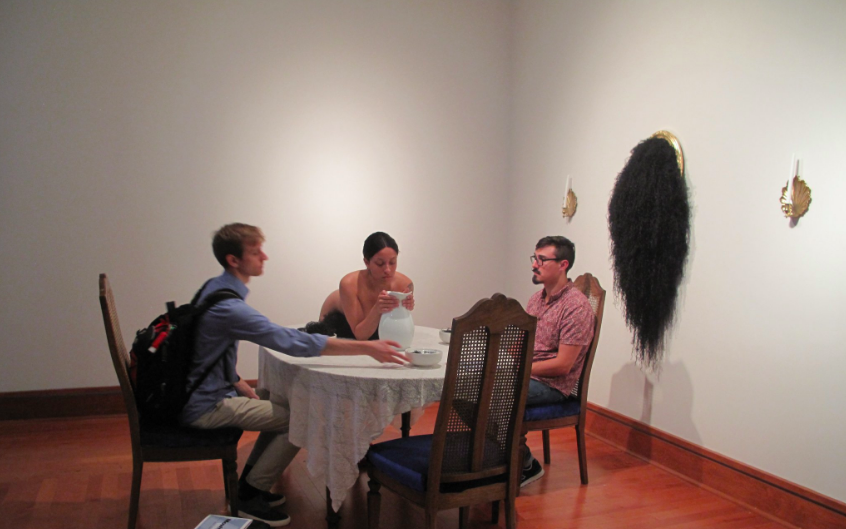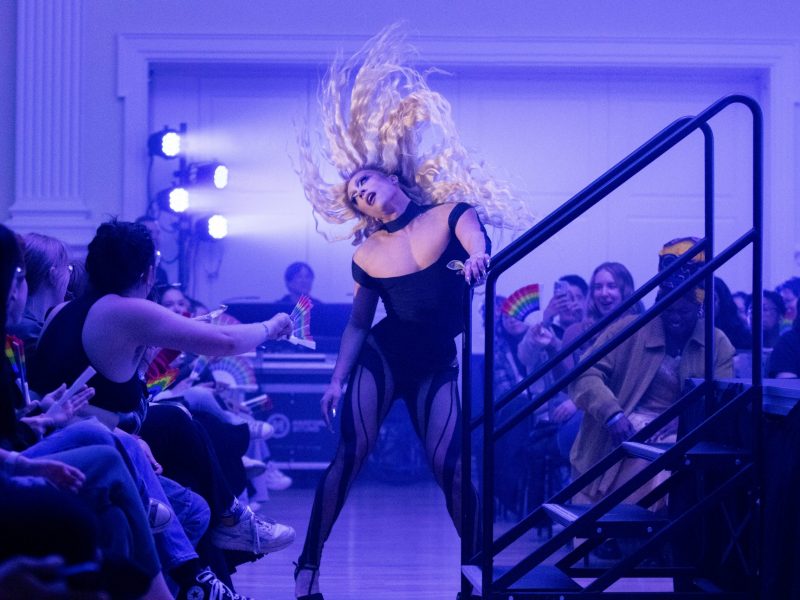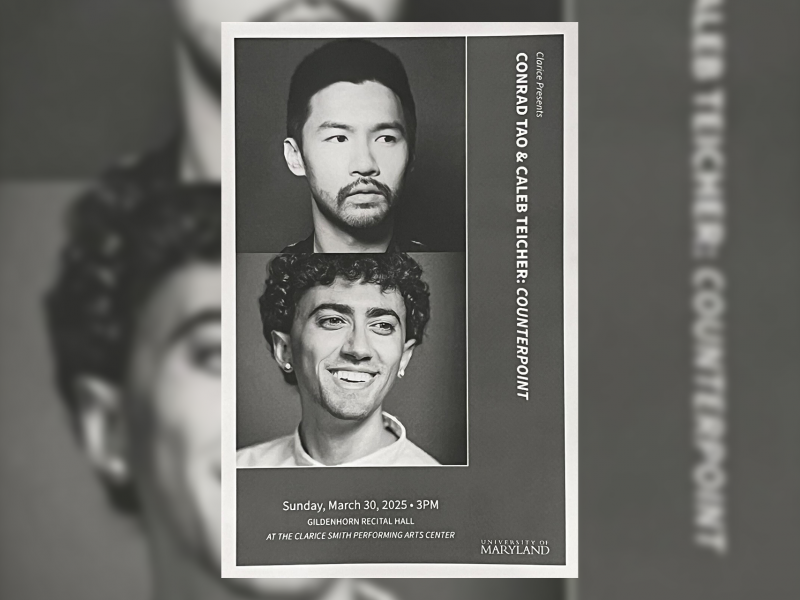Upon entering “Moving Visuals,” I could clearly see this was going to be a unique art experience. Screens were mounted all around an open room, featuring bizarre-looking videos while a live nude performance was taking place. Though a bit shocking at first, the experience was unique and eye-opening, an incredible display of creativity and original thought.
The exhibit had its grand opening on Thursday in the University of Maryland’s David C. Driskell Center. The exhibit features work from seven different black artists, in the form of of videos and a live performance. The pieces explore themes of blackness, race, power, identity, truth and even artificial intelligence.
In the center of the largest wall is a projection of Jefferson Pinder’s video “Ben-Hur.” It features black men in business suits pulling stationary rowing machines until they cannot go any further. This piece, like the others in “Moving Visuals,” has multiple interpretations. Since they are in suits, it could be a representation the place of African Americans in the white workplace — working, working, working, yet never moving forward. The illusion of progress, well-dressed, but still trapped.
The live performance, titled “Consumption,” is even more attention-grabbing. The artist, Vanessa Jagodinsky, stands fully nude at a table, where the audience is encouraged to take turns sitting down in front of her. Jagodinsky has a long wig attached near her pelvis, representing her pubic hair, and cuts off small pieces of the hair to “serve” to the audience members at the table. The performer is both the server and the food, suggesting that females are treated as objects to be consumed and used.
One of the most unsettling but intriguing videos is “Conversations with Bina48,” where artist Stephanie Dinkins interviews Bina48, a black social robot. The memo next to the video says Dinkins is concerned about artificial intelligence and how pervasive today’s technology is. At first, the robot can only say what Dinkins said, but slowly Bina48 becomes intelligent and begins to think on its own and ask introspective questions.
David Driskell spoke a few words about the exhibit after people had some time to look around. He said “Moving Visuals” challenges the audience to see beyond the ordinary and think outside the box. Driskell said he is proud that the university is not lacking in the exploration of media.
Many art exhibits consist of calm, pretty pictures on a wall. They are nice to look at and admire; they are beautiful and inspiring, but they do not necessarily make you think or force you out of your comfort zone. “Moving Visuals” is purposefully confrontational. It made the audience really ponder what they were experiencing. The oddness of the various displays encouraged viewers to try to understand the artists and the message they were trying to convey.



